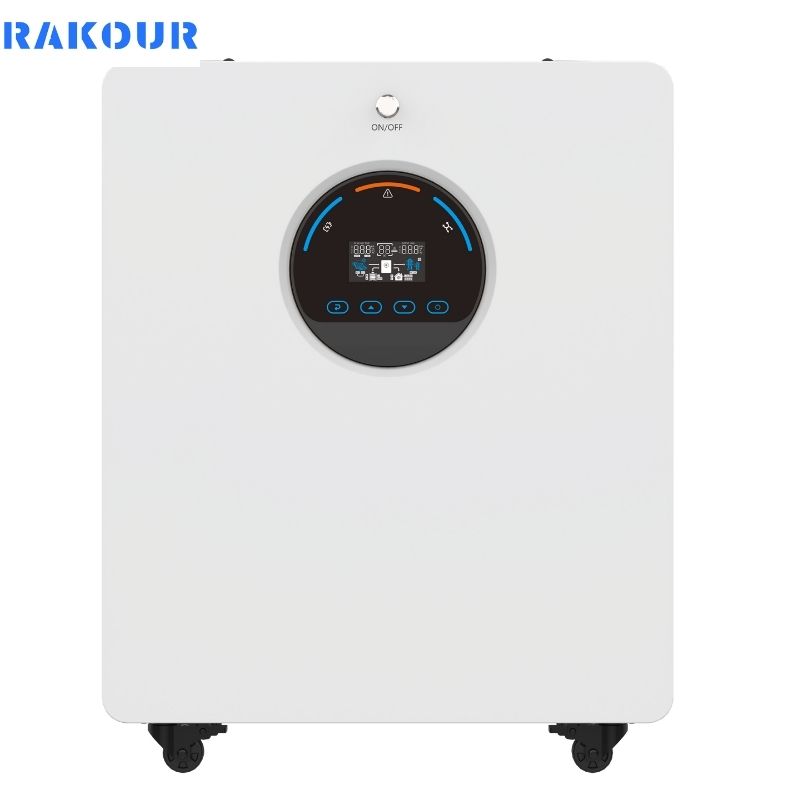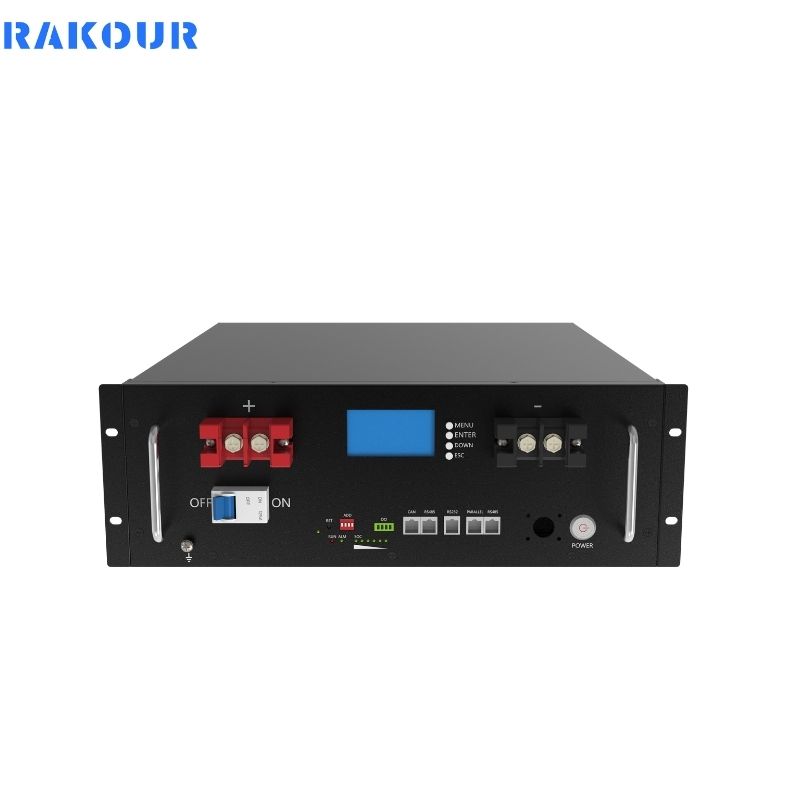Introduction
In the realm of modern energy solutions, 12V lithium batteries have emerged as a popular choice for various applications, including renewable energy systems, electric vehicles, and portable electronics. Understanding how these batteries operate, particularly when connected in parallel, is crucial for maximizing their efficiency and longevity. This blog delves into the intricacies of 12V 100Ah lithium batteries, exploring the significance of battery balancing and effective management techniques that ensure optimal performance.
When batteries are connected in parallel, they share the load while maintaining the same voltage level. This configuration allows for increased capacity and extended runtimes. However, it also introduces challenges related to battery balancing. Properly managing the charge across multiple batteries is essential to prevent issues such as overcharging or undercharging, which can lead to performance degradation and safety hazards. In this article, we will discuss the importance of battery balancing, methods for achieving it, best practices for using 12V 100Ah lithium ion batteries, and troubleshooting common issues.
Understanding Parallel Batteries

A. Definition of Parallel Battery Connection
Connecting batteries in parallel involves linking their positive terminals together and their negative terminals as well. This setup retains the nominal voltage while increasing total capacity. For instance, when two 12V 100Ah lithium batteries are connected in parallel, they create a battery pack with a combined capacity of 200Ah at 12V.
B. How Parallel Batteries Work
The operation of parallel batteries hinges on the principle that they function as a single unit with enhanced capacity. The total current output is the sum of the individual currents from each battery. This configuration reduces overall internal resistance, allowing for more efficient power delivery and longer usage times.
C. Advantages of Using Parallel Configurations
- Increased Capacity: By connecting multiple batteries, users can achieve greater total energy storage without increasing voltage levels.
- Enhanced Power Output: Parallel configurations can deliver higher currents for demanding applications, making them ideal for systems requiring substantial energy.
- Improved Reliability: If one battery fails, others can continue to provide power, reducing the risk of total system failure.
However, to fully leverage these advantages, ensuring that all batteries are balanced before connection is paramount.
The Importance of Battery Balancing
A. What is Battery Balancing?
Battery balancing is the process of equalizing charge levels across individual cells or batteries within a system to maintain uniform voltage levels or state of charge (SOC). This process is vital for preventing individual cells from becoming overcharged or undercharged, which can lead to significant performance issues and safety risks.
B. Why is Balancing Crucial for Performance and Lifespan?
The performance and lifespan of a battery system heavily depend on maintaining balance among its components. When cells or batteries exhibit different SOCs:
- The overall capacity becomes limited by the weakest cell.
- During discharge cycles, the lowest charged battery will deplete first, leading to premature cutoff.
- Conversely, during charging cycles, the highest charged battery may reach its limit before others are fully charged.
These imbalances can result in:
- Overcharging or over-discharging individual cells
- Reduced usable capacity
- Shortened overall lifespan
To mitigate these risks effectively, implementing a robust battery management system (BMS) is essential. According to Battery University, proper balancing not only enhances performance but also extends the overall lifespan of your battery pack by ensuring that all cells operate efficiently.If you’re looking to optimize your battery performance or have questions about managing your systems effectively, don’t hesitate to reach out to us at Rakour Battery. Our experts are here to help you ensure your setup operates smoothly and efficiently.
C. Common Issues Caused by Imbalances
Imbalances within a battery system can manifest in several ways:
- Decreased efficiency: Energy loss occurs when some cells are overcharged while others remain undercharged.
- Safety risks: Overcharging can lead to thermal runaway—a dangerous condition that can cause fires or explosions.
By understanding these challenges and addressing them proactively through effective balancing techniques, users can significantly enhance their battery systems’ performance and safety.
Methods of Balancing Batteries
A. Active Balancing
Active balancing techniques transfer energy between cells to equalize their voltages without wasting energy as heat. Common methods include:
- Capacitive Balancing: This method uses capacitors to temporarily store energy from higher-voltage cells and discharge it into lower-voltage ones.
- Inductive Balancing: Employing inductors for energy transfer between cells minimizes energy loss compared to resistive methods.
- Energy Redistribution: Utilizing power electronics allows for efficient energy management across cells.
B. Passive Balancing
Passive balancing dissipates excess energy from higher-charged cells as heat through methods such as:
- Resistive Balancing: Connecting resistors in parallel with higher-voltage cells allows them to discharge excess energy gradually.
- Shunt Balancing: Similar to resistive balancing but uses shunt resistors to divert current away from higher-voltage cells.
- Discharge Balancing: Selectively discharging higher-voltage cells during charging cycles helps align their levels with lower-voltage counterparts.
C. Software-Based Balancing
Advanced BMS technologies monitor SOC and implement algorithms to manage charge distribution effectively:
- SOC Monitoring: Continuously tracks each cell’s charge level and adjusts charging protocols accordingly.
- Algorithmic Balancing: Predicts SOC variations and actively manages charging cycles to maintain balance across all cells.
Implementing these methods can significantly enhance the performance and longevity of your battery systems, particularly when utilizing a 12V battery lithium setup.
Best Practices for Using Batteries in Parallel
A. Pre-Connection Voltage Checks
Before connecting batteries in parallel, it is crucial to measure each battery’s voltage using a multimeter to ensure they are within an acceptable range (typically less than 0.1V difference). This step helps prevent excessive current flow between batteries during operation.
B. Regular Monitoring and Maintenance
Frequent checks on voltage levels can help detect imbalances early on:
- Monitor temperatures regularly; overheating may indicate an imbalance requiring immediate attention.
- Use similar capacity batteries; mixing old and new or different capacity batteries can lead to inefficiencies.
C. Recommendations for Battery Types and Capacities
Using batteries with similar specifications ensures better performance:
- Opt for high-quality options like the 12V 100Ah lithium ion battery, known for their reliability and longevity.
- Consider built-in bypass circuits that maintain balance automatically during charging cycles.
By following these best practices, users can optimize their parallel battery systems’ efficiency and lifespan while enjoying the benefits of high-capacity solutions like the 12V lithium battery series.
If you need assistance in selecting the right products or have specific inquiries about your setup, our team at Rakour Battery is ready to provide expert guidance tailored to your needs!
Troubleshooting Common Issues
A. Signs of Imbalance in Parallel Batteries
Common indicators include irregular voltage readings between cells or reduced overall performance:
- Check BMS diagnostics for imbalance alerts.
- Look out for shorter runtimes or inconsistent power delivery; these may signal underlying issues with your setup.
B. Solutions for Addressing Voltage Differences
If significant imbalances are detected:
- Disconnect affected batteries and charge them separately until voltages align.
- Implement active or passive balancing techniques as needed; this may involve using specialized equipment designed for your specific battery type.
C. Safety Precautions to Prevent Thermal Runaway
To mitigate risks associated with imbalances:
- Ensure your BMS includes overcurrent protection features.
- Regularly monitor temperature levels during operation; this proactive approach can help prevent dangerous situations before they escalate.
By being proactive about troubleshooting and maintenance, users can ensure safe operation of their parallel battery systems while maximizing performance—particularly crucial when dealing with high-capacity options like the 12V 100Ah lithium battery series.
recommended reading
Conclusion
Understanding how batteries in parallel drain and balance their charge is crucial for anyone utilizing these systems in real-world applications like solar power storage or electric vehicles powered by a reliable source like a 12V 100Ah lithium ion battery pack. Proper management through effective balancing techniques not only enhances performance but also extends the lifespan of your battery packs significantly—ensuring you get the most out of your investment in technology designed for efficiency and sustainability.
As technology continues to evolve, staying informed about best practices will empower users to harness the full potential of their battery systems while ensuring safety and efficiency in every application involving a robust solution like a 12V battery lithium setup.
For additional insights on optimizing your lithium-ion batteries’ performance and safety mechanisms, consider exploring resources available at Battery University, which offers comprehensive information on various aspects of battery technology including cell matching and balancing strategies that are critical for maintaining optimal operation over time (source).
Learn How RAKOUR Can help you deploy
future-proof energy
Our team of energy storage experts will take the time to fully understand your business, challenges , and opportunities.

How Li Ion Battery Power Modern Devices
Explore the pivotal role of lithium-ion batteries in powering modern devices. This article delves into

What Size Lithium Battery for 12V Trolling Motor?
Selecting the right lithium battery for a 12V trolling motor requires careful consideration of factors

How To Charge 12v Lithium Battery?
charging a 12V lithium battery involves adhering to specific voltage and current specifications, utilizing appropriate

How Many Batteries Does a Golf Cart Take?
This blog explores the number of batteries needed for golf carts, detailing configurations, battery types,

How long does a 12 volt deep cycle marine battery last
The lifespan of a 12-volt deep cycle marine battery is influenced by various factors, including

How Long Do Golf Cart Batteries Last?
Golf cart batteries, crucial for vehicle performance, have varying lifespans influenced by type, usage, and
FAQs















